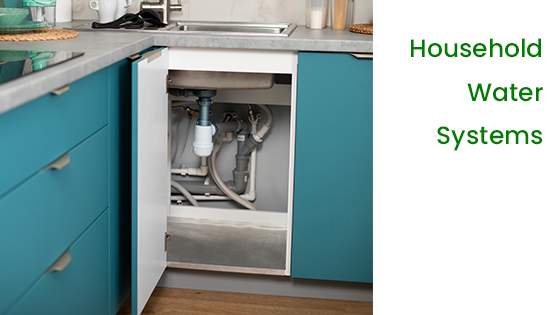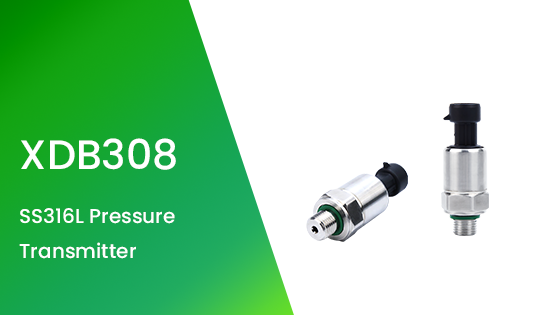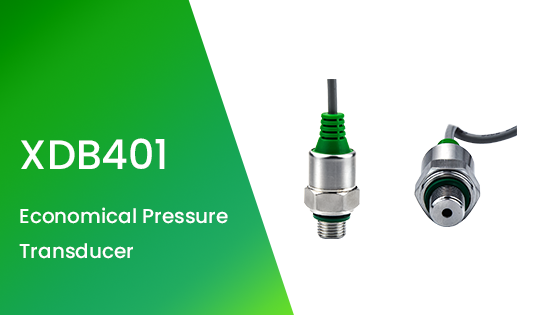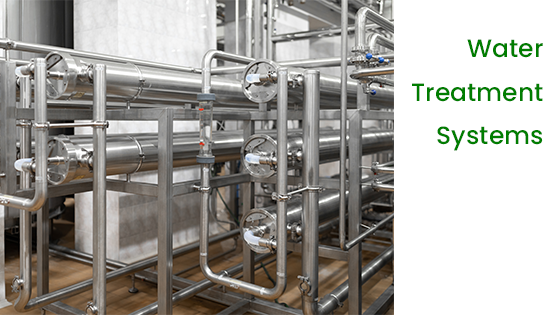Introduction

Household water systems are an essential part of modern life, ensuring our daily water needs for drinking, bathing, cleaning, and more. However, with urbanization and population growth, these systems face various challenges, such as water pressure fluctuations, leaks, and water waste. These issues not only affect our quality of life but also lead to unnecessary resource waste and economic losses.
Water pressure sensors, as advanced measurement tools, play a crucial role in improving the efficiency of household water systems. By monitoring and adjusting water pressure in real-time, these sensors can effectively prevent the impact of pressure fluctuations, detect and prevent leaks, and optimize the overall performance of the water system. This article will explore the basic principles of water pressure sensors and their specific applications in household water systems, helping readers understand how to improve water efficiency, save water resources, and enhance quality of life through this technology.
Basic Principles of Water Pressure Sensors
A water pressure sensor is a device that senses changes in liquid pressure and converts the pressure signals into electrical signals. These sensors can monitor water pressure in real-time and transmit data to control systems for timely adjustment and optimization. Below are two main water pressure sensor products from our company, XIDIBEI, which have significant advantages in improving the efficiency of household water systems.

XDB308 Series Water Pressure Sensors
The XDB308 series pressure sensors use advanced international piezoresistive sensor technology, allowing a flexible selection of different sensor cores, suitable for various applications. This series adopts all stainless steel and SS316L threaded packaging, providing excellent long-term stability and multiple signal outputs. These features make the XDB308 series particularly suitable for household water systems.
Suitability Analysis:
Durability and Stability: The XDB308 uses SS316L stainless steel material, which has high corrosion resistance and mechanical strength and is capable of long-term operation in humid and corrosive environments, ensuring the stable long-term operation of household water systems.
Accuracy and Response Speed: With an accuracy of ±0.5%FS or ±1.0%FS and a response time of only 3 milliseconds, it can quickly respond to pressure changes, ensuring real-time monitoring and adjustment of the system, avoiding inconvenience caused by pressure fluctuations.
Flexibility: Offers various output signals (such as 4-20mA, 0-10V, I2C), easily integrating into existing home automation(https://en.wikipedia.org/wiki/Automation) systems, adapting to different control and monitoring needs.
XDB401 Series Economic Pressure Sensors

The XDB401 series pressure sensors use a ceramic pressure sensor core, ensuring excellent reliability and long-term stability. The sensor adopts a sturdy stainless steel housing structure, suitable for various environments and applications, and is widely used in household water systems.
Suitability Analysis:
Economy and Reliability: The XDB401 series offers high-cost performance, suitable for budget-limited but performance-reliable household water systems. Its ceramic sensor core provides excellent corrosion resistance and stability, ensuring worry-free long-term use.
Compact Design and Diversity: The compact design makes it easy to install in various parts of the household water system, and it offers multiple connection methods (such as Packard connectors, and direct-molded cables to adapt to different installation needs.
Wide Applications: This series can operate in a wide temperature range of -40 to 105 degrees Celsius and has an IP65 protection level, suitable for various household environments and water needs, such as smart constant pressure water supply systems, pressure monitoring of water pumps, and air compressors.
By selecting and installing the appropriate XDB308 or XDB401 series water pressure sensors, household water systems can significantly improve their efficiency and reliability, ensuring a stable water pressure supply, reducing water waste, and enhancing the overall water usage experience. The high performance and diversity of these sensors make them ideal choices for household water systems.
Common Issues in Household Water Systems
Although household water systems are crucial in daily life, they also face some common issues that affect water usage experience and overall system efficiency. Here are some typical problems in household water systems:
Water Pressure Fluctuations Causing Inconvenience
Water pressure fluctuations are common issues in household water systems. When the pressure is too low, activities like showering and dishwashing become very inconvenient, and some water devices may not work properly. Conversely, when the pressure is too high, it can damage pipes and equipment, increasing maintenance costs.

Leaks and Pipe Bursts
In household water systems, leaks and pipe bursts are two major hazards. Leaks not only waste precious water resources but can also cause water damage, harming furniture and building structures. Pipe bursts can lead to more serious consequences, such as large-scale leaks and water supply interruptions, requiring costly repairs and replacements.
Water Waste
Water waste is another common problem. Traditional water systems often lack effective monitoring means, making it difficult to detect and address water anomalies promptly, leading to water waste. In water-scarce regions, this problem is particularly severe, increasing water costs and adversely affecting the environment.
Applications of Water Pressure Sensors in Household Water Systems
Water pressure sensors play a crucial role in improving the efficiency and stability of household water systems. Here are some key applications of water pressure sensors in household water systems and specific application scenarios of XIDIBEI sensors:
Pressure Regulation and Stabilization
Household water systems often encounter pressure fluctuation issues. When the pressure is too low, activities like showering and dishwashing become very inconvenient, and some water devices may not work properly. Conversely, when the pressure is too high, it can damage pipes and equipment, increasing maintenance costs. By installing water pressure sensors, household water systems can monitor pressure changes in real-time and adjust as needed. The control system can automatically adjust the pressure based on sensor signals, ensuring the stability and consistency of the water supply. XIDIBEI's XDB308 series sensors, with their high accuracy (±0.5%FS) and fast response time (≤3ms), are very suitable for high-frequency pressure monitoring and regulation. These sensors' multiple output signals (such as 4-20mA, 0-10V) can be compatible with various control systems, ensuring real-time pressure adjustment, improving water comfort, and protecting the safety of pipes and equipment.
Leak Detection and Alarm
In household water systems, leaks and pipe bursts are two major hazards. Leaks not only waste precious water resources but can also cause water damage, harming furniture and building structures. Pipe bursts can lead to more serious consequences, such as large-scale leaks and water supply interruptions, requiring costly repairs and replacements. Water pressure sensors can be used to detect leaks in the system. When abnormal pressure changes (e.g., sudden pressure drops) are detected, the sensor sends a signal to the control system, triggering the alarm system. XIDIBEI's XDB401 series sensors, with their high accuracy and sensitivity, can detect subtle changes in the early stages of leaks, alerting users to take timely action. Their high reliability and long life (500,000 cycles) ensure stable operation in various environments. Multiple connection methods (such as Packard connectors, and direct-molded cables) make it easy to integrate them into existing leak detection and alarm systems.
Automated Control
Household water systems need to adjust water flow based on actual demand to optimize water efficiency and reduce unnecessary water waste. Automated control reduces manual intervention, improving system reliability and efficiency. Water pressure sensors can be integrated into automated control systems to control valves and pumps. When the pressure reaches the set value, the sensor can trigger the valve to open or close or start and stop the pump. XIDIBEI's XDB308 series sensors, with their high accuracy and fast response time, can precisely control valve and pump operation, improving system water efficiency. Their robust SS316L stainless steel construction and multiple output signal options (such as 4-20mA, 0-10V) allow them to adapt to various household environments and water needs. The compact design and high reliability of the XDB401 series sensors are also suitable for automated control systems, ensuring efficient and intelligent system operation.
Through these applications, XIDIBEI's water pressure sensors not only solve common issues in household water systems but also significantly enhance overall system efficiency and reliability. Choosing the right water pressure sensor and properly installing and using it will bring significant benefits and provide better protection for household water systems.
Methods to Improve Household Water Efficiency
To further improve the efficiency of household water systems, the following methods can be adopted:
Optimize Pressure Settings
Set the pressure range reasonably according to the actual water needs of the household, avoiding unnecessary high pressure that causes waste and equipment damage. Install smart pressure regulators to automatically maintain pressure within the set range. XIDIBEI sensors, with their high accuracy and fast response time, are ideal for use in such regulators to ensure stable pressure and improve water efficiency.
Implement Smart Water Management Systems
Adopt smart water management systems, combining sensors and controllers to achieve comprehensive monitoring and management of household water. The system can analyze water usage data in real-time, detect anomalies, and provide optimization suggestions. XIDIBEI sensors, with their high reliability and multiple output signal options, can seamlessly integrate with smart management systems, ensuring efficient system operation.
Data Analysis and Usage Pattern Optimization
Analyze water usage data to understand household water habits and peak usage periods. Based on data, optimize water usage patterns, such as staggered water usage and adjusting the working hours of water devices, to improve water efficiency. XIDIBEI sensors provide accurate data output, offering reliable data support for optimizing water usage patterns and helping households achieve more efficient water management.
Considerations for Selecting and Installing Water Pressure Sensors
When selecting and installing water pressure sensors, the following points should be noted:
Selection Guide: How to Choose Suitable Water Pressure Sensors
Determine Measurement Range: Ensure the sensor's measurement range covers the actual working pressure of the system.
Consider Accuracy Requirements: Choose appropriate sensors based on the accuracy requirements of the specific application. For high-precision monitoring needs, such as smart water management systems, high-accuracy sensors are ideal.
Choose Suitable Output Signals: Select the appropriate output signal type based on the control system's needs. XIDIBEI sensors offer various signal output options, such as 4-20mA, 0-10V, and I2C, ensuring compatibility with different systems.
Installation and Maintenance Tips
Correct Installation Position: Sensors should be installed in pressure-stable and suitable environmental conditions, avoiding extreme temperatures and humidity that could affect their performance.
Regular Inspection and Calibration: To ensure sensor accuracy and reliability, regularly check their working status and perform necessary calibration. XIDIBEI sensors, with their high stability and long life, reduce the need for frequent calibration but still require regular maintenance for optimal performance.
Protective Measures: During installation, take appropriate protective measures such as waterproofing, dustproofing, and shockproofing to protect the sensor from external environmental impacts. XIDIBEI sensors, with their sturdy stainless steel housing and high protection level (e.g., IP65/IP67), can operate stably in various environments.
By selecting and correctly installing XIDIBEI water pressure sensors, household water systems can significantly improve their efficiency and reliability, ensuring a stable pressure supply, reducing water waste, and enhancing the overall water usage experience.
Conclusion
Water pressure sensors play a crucial role in improving the efficiency and stability of household water systems. By monitoring and adjusting water pressure in real-time, these sensors can effectively solve issues caused by pressure fluctuations, prevent leaks and pipe bursts, and optimize water efficiency. Household water systems equipped with water pressure sensors can provide a more stable and comfortable water usage experience, significantly reduce water waste, and extend the lifespan of system equipment.
XIDIBEI sensors, with their high accuracy, fast response, and multiple output signal options, can meet the needs of various household water systems, ensuring efficient operation and intelligent management. By selecting suitable water pressure sensors and properly installing and maintaining them, household water systems can significantly enhance their overall performance and reliability.
We encourage readers to consider installing water pressure sensors to improve their household water systems. With advanced sensing technology, not only can you enhance water efficiency, but also contribute to environmental protection and water conservation. XIDIBEI is committed to providing high-quality sensor solutions to help users achieve smarter and more efficient water management.
Post time: Jul-30-2024

